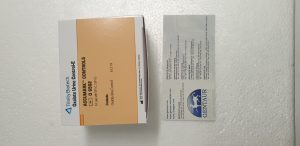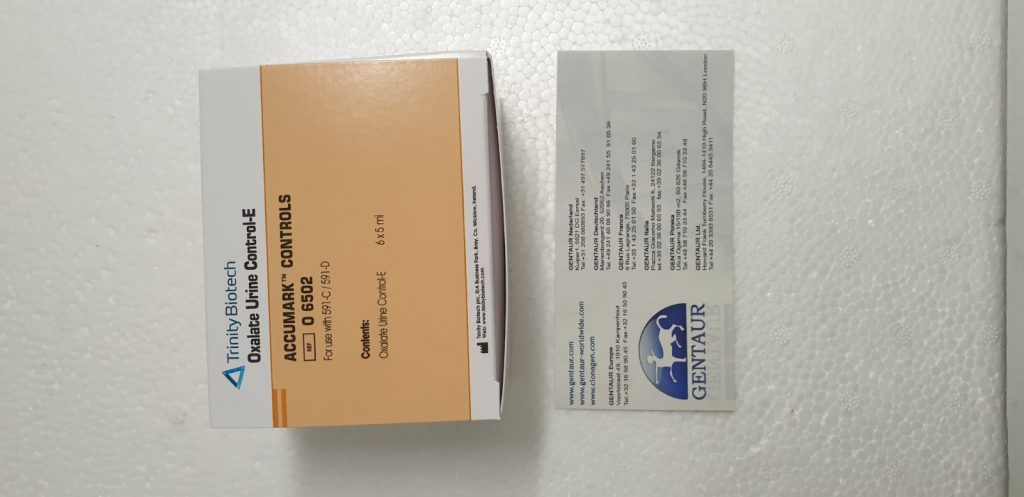A total of 291 samples collected from symptomatic and asymptomatic RT-PCR-confirmed patients were used to evaluate the ELISA kits’ performance (EDI, AnshLabs, DiaPro, NovaLisa, and Lionex). The sensitivity was measured at three different time-intervals post symptoms onset or positive SARS-CoV-2 RT-PCR test (≤14, 14-30, >30 days). The specificity was investigated using 119 pre-pandemic serum samples.
The sensitivity of all IgM kits gradually decreased with time, ranging from 48.7% (EDI)-66.4% (Lionex) at ≤14 days, 29.1% (NovaLisa)-61.8% (Lionex) at 14-30 days, and 6.0% (AnshLabs)-47.9% (Lionex) at >30 days. The sensitivity of IgG kits increased with time, peaking in the latest interval (>30 days) at 96.6% (Lionex). Specificity of IgM ranged from 88.2% (Lionex)-99.2% (EDI), while IgG ranged from 75.6% (DiaPro)-98.3% (Lionex). Among all RT-PCR-positive patients, 23 samples (7.9%) were seronegative by all IgG kits, of which only seven samples (30.4%) had detectable IgM antibodies. IgM assays have variable and low sensitivity, thus considered a poor marker for COVID-19 diagnosis. IgG assays can miss at least 8% of RT-PCR-positive cases.
Fully integrated rapid microfluidic device translated from conventional 96-well ELISA kit
In this work, a fully integrated active microfluidic device transforming a conventional 96-well kit into point-of-care testing (POCT) device was implemented to improve the performance of traditional enzyme-linked immunosorbent assay (ELISA). ELISA test by the conventional method often requires the collection of 96 samples for its operation as well as longer incubation time from hours to overnight, whereas our proposed device conducts ELISA immediately individualizing a 96-well for individual patients.
To do that, a programmable and disposable on-chip pump and valve were integrated on the device for precise control and actuation of microfluidic reagents, which regulated a reaction time and reagent volume to support the optimized protocols of ELISA. Due to the on-chip pump and valve, ELISA could be executed with reduced consumption of reagents and shortening the assay time, which are crucial for conventional ELISA using 96-well microplate.
To demonstrate highly sensitive detection and easy-to-use operation, this unconventional device was successfully applied for the quantification of cardiac troponin I (cTnI) of 4.88 pg/mL using a minimum sample volume of 30 µL with a shorter assay time of 15 min for each ELISA step. The limit of detection (LOD) thus obtained was significantly improved than the conventional 96-well platform.
Analyzing Gluten Content in Various Food Products Using Different Types of ELISA Test Kits
Gluten is an insoluble protein produced when glutelins and prolamins, which are found in grains such as wheat, barley, and oats, combine to form an elastic thin film. This dietary gluten can cause severe contraction of the intestinal mucous membrane in some people, preventing nutrient absorption. This condition, called celiac disease (CD), affects approximately 1% of the world’s population. The only current treatment for patients with CD and similar diseases is lifelong avoidance of gluten.
To analyze the gluten content in food, various enzyme-linked immunosorbent assay (ELISA) tests are currently used. In this study, the gluten content in various food products was analyzed using different kinds of ELISA test kits. For gluten-free food, three different ELISA test kits mostly yielded values below the limit of detection.

However, gluten was detected at 24.0-40.2 g/kg in bread, 6.5-72.6 g/kg in noodles, and 23.0-86.9 g/kg in different powder food samples. A significant difference (p < 0.05) in gluten content was observed for these gluten-containing food products. Reproducibility issues suggest that it is necessary to use several ELISA kits for the accurate detection and quantification of gluten in various food products rather than using one ELISA kit.
Evaluation of ELISA kits for the screening of four nitrofuran metabolites in aquaculture products according to the European guideline for the validation of screening methods
The administration of nitrofurans to livestock to treat or prevent animal diseases has been banned in the EU for the production of food of animal origin. The corresponding marker residues are tissue-related metabolites AMOZ, AHD, SEM, and AOZ. The MRPL (minimum required performance limit)/RPA (Reference point for action) was set at 1 µg kg-1 in the EU. Thus, all the laboratories involved in the control of nitrofuran metabolites must detect at least at this analytical limit of performance.
The objectives of the work reported here were to evaluate the performance of ELISA kits from two different manufacturers (R-Biopharm, Germany; Europroxima, the Netherlands) for the individual screening of the four nitrofuran metabolites (AOZ, AMOZ; AHD; and SEM) in aquaculture products (fish, shrimps), and then to validate the kits according to the European Decision EC/2002/657 and to the European guideline for the validation of screening methods.
[Linking template=”default” type=”products” search=”HUMAN IgG ELISA kits” header=”3″ limit=”126″ start=”4″ showCatalogNumber=”true” showSize=”true” showPrice=”true” showDescription=”true” showAdditionalInformation=”true” showImage=”true” showSchemaMarkup=”true” imageWidth=”” imageHeight=”” site=”www.gentaur.pl” linkProductCatalogNumber=”true”]
The false positive rates were below 9 % for the kits from both manufacturers. The detection capabilities CCβ determined were all below the current RPA (1 µg/kg). However, regarding the updated RPA at 0.5 µg/kg that shall apply in 2022, the AMOZ and SEM kits from R-Biopharm and the SEM kit from Europroxima will not be able to reach it.

